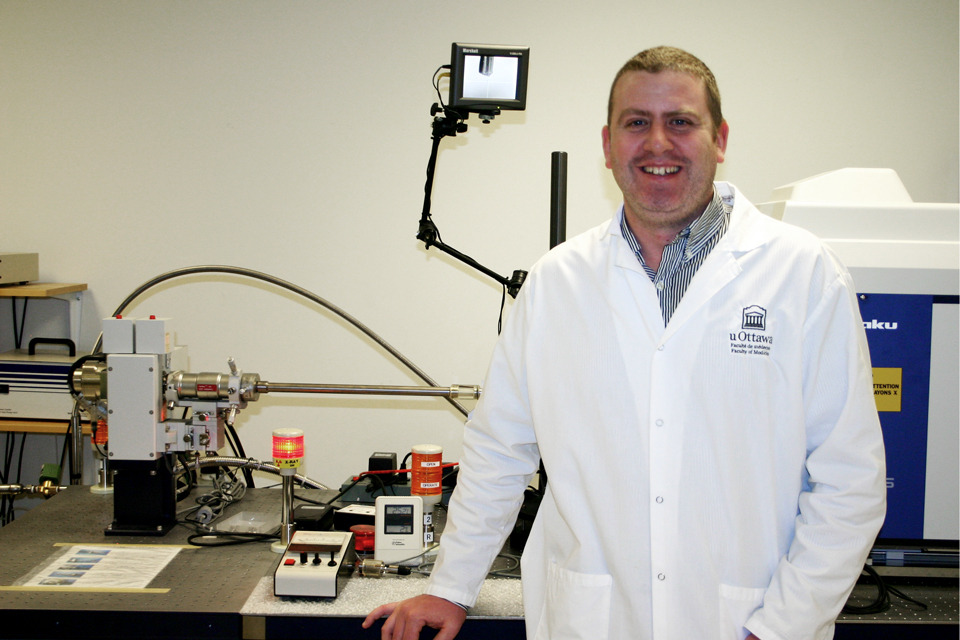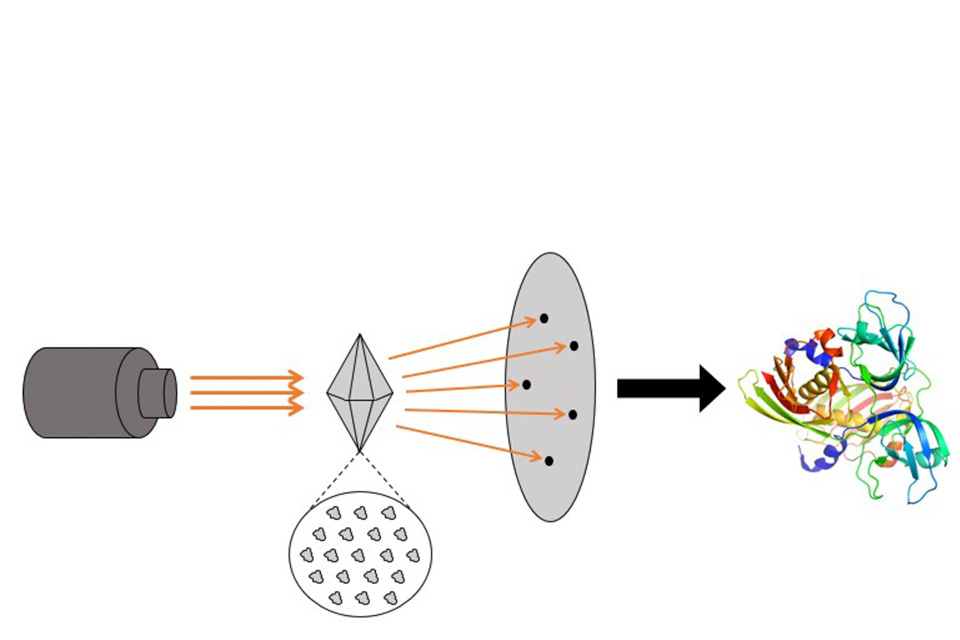By Catherine Gnyra
Special Guest Writer
For most people, the word “scientist” may conjure up the image of a stone-faced, austere individual labouring in the lonely depths of a laboratory. Although this stereotype may hold true for some scientists, Dr. Jean-François Couture, or simply JF as most people call him, completely breaks the mold with his caring nature and infectious enthusiasm. With passion in his heart and a bounce in his step, Dr. Couture seeks to find a cure for infant leukemia through structural biology, a promising approach for battling this aggressive form of cancer.
Structural biology, which lies at the interface between biology, chemistry, and physics, is the study of molecular structures and their interactions. In Dr. Couture’s lab, the interactions between proteins and DNA are studied using X-rays. Shining X-rays onto a crystallized protein and analyzing the way in which these X-rays are deflected gives scientists insight into that protein’s molecular structure. “A protein is a universe inside which there are millions of interactions,” says Dr. Couture with a twinkle in his eye, explaining that the protein’s individual components are “scattered across space, with links connecting them to one another,” much like a network of stars form a constellation in the night sky. The details of the protein’s structure can then be used to predict the ways in which the protein will interact with other molecules, such as DNA, on an atomic scale. Thus, exactly where and how the constellation fits into the broader galaxy can be uncovered.
Proteins interact with DNA to turn genes on or off. If a protein malfunctions due to a mutation and begins switching genes on or off at random, disease can ensue. The research in Dr. Couture’s lab largely focuses on the mixed-lineage leukemia protein, or MLL, as 70% of infant leukemias are in fact caused by a mutation in this protein. The mutated form of MLL activates genes in blood cells that should only be turned on during fetal development, leading to the production of cancerous blood cells, or leukemia. Dr. Couture sometimes visits hospitals, meeting parents and their children who suffer from leukemia caused by an MLL mutation. “You meet parents and their 3-month-old child [who] has a month left to live because the leukemia is so aggressive,” shares a grave Dr. Couture, who has two young children of his own. By studying the way in which MLL interacts with DNA and with other proteins in leukemia, he hopes to pave the way for the development of a drug that could block the abnormal interactions and cure the devastating disease.
While Dr. Couture is very passionate about his research, he cares just as much about the people with whom he conducts it. When asked about which aspects of his work he enjoys the most, he answers that witnessing his students learn and make their own discoveries is one of his greatest joys. “Seeing the accomplishment in their eyes…nothing compares to that,” he explains. Dr. Couture also loves to teach, saying that the moment he sets foot in a classroom and begins interacting with his students, his mood lifts. “It’s really fun, it’s really cool!”
Dr. Couture also breaks the scientist stereotype by successfully balancing the stressful and demanding business of running a productive lab with spending time with his loved ones. He thanks his own mentors, who led him to develop this philosophy of balance: “Researchers can be a little disconnected from reality,” he jokes, “but my supervisors were always extraordinary gentlemen,” in that they considered their employees as people and not solely as projects.
But even with a balanced approach and all the passion in the world, there are bound to be hurdles along the way. Although a drug that could block the leukemia-inducing MLL-DNA interaction is currently in third-phase clinical trials, it would only be effective against a very specific subtype of infant leukemias. However, work is ongoing in Dr. Couture’s lab to determine the best way to block the problematic interaction and eradicate this form of cancer once and for all. Explaining the significance of his work, Dr. Couture concludes by stating that, “the most important thing is, will you heal people with this? Yes, absolutely.”


